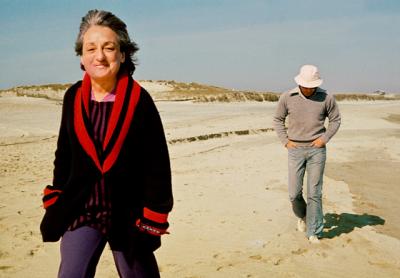Susan Wood’s 40 Years of Women

Oh, how I wish I’d known the photographer Susan Wood back in the ’60s, when I was a very young reporter at The New York Post and she was a very young freelance photographer, just beginning to make her way in a field where women, bar a few anomalies, were barely tolerated. It was the time of Mad Men, but “the dam holding all our illusions in place could not hold back the surge of ambition in women to play a role in running the world,” as she reminds us in the foreword to her latest compilation of photos, “Women: Portraits 1960-2000.”
Ms. Wood was as eager-beaver a dam-breaker, bless her guts and talent, as any, and she obviously knew how to charm both sexes, judging by the lasting friendships she made with many of her famous subjects. If only I’d had her around to centerfold a book called “Nine to Five and After” with a few of her typically up-close-and-personal shots of the women I’d interviewed to write it, I bet it would have sold a whole lot more than 2,600 copies (even if it did happen to come out the exact same week as “Sex and the Single Girl” and get mentioned — barely — in the same reviews).
Hamptons denizens of a certain age and caste — call us as we were, the chattering classes — may see their own youthful reflections in the vibrant young women pictured by Ms. Wood, teetering on the edges of lasting achievement. Here’s Betty Freidan when she was renting in one of East Hampton’s first group houses (The Commune, they called it), caught looking, uncharacteristically, like all’s right with the world as she strolls along the beach. Here is Nora Ephron, who kept to herself here but had more big-name admirers than anyone, laughing as she scans what could be one of her own movie scripts. Here is an impossibly young Martha Stewart in the endless-summer days before she turned blond, dressed in a denim romper, rounding up a flock of ducks.
Here too are Ricky Lauren, Ralph’s beautiful wife of many years now — “muse, author, and artist,” notes Ms. Wood — chasing after her equally beautiful children; Muriel Siebert, a Wall Street legend as the first woman to own a seat on the New York Stock Exchange (and one of the first owners of a “condominium” in the newly built Georgica Estates when no one could quite explain what that was); Barbara D’Arcy, the interior design genius behind Bloomingdale’s legendary model rooms, where decorators and engaged couples alike used to come for inspiration, and the writer Linda Bird Francke of Sagaponack, who once took time out from her nonfiction studies of divorce, abortion, and gender questions in the military to run for office as a liberal Democrat against Montauk’s longtime Republican New York State Assemblyman John Behan. (Big mistake.)
Ms. Wood has homes in Greenport and New York City, and in Amagansett, where she lives most of the time. In going through her multiple archives, she explains, she discovered that for over 60 years, women, including the big names of feminism, have been the main subjects of her photographs; hence this compilation. From appearing herself in a 1961 group photograph captioned “Working Girls” that was published in Esquire — “We were all girlfriends of the magazine’s executives, editors, and space salesmen,” she notes wryly; Gloria Steinem is in that photo too — she became a recorder of female “achievers, trailblazers, and glass-ceiling breakers,” as well as fashion models, actresses, socialites, “femme fatales,” and many others.
“Was I a feminist?” she asks. “A t the time, I thought of myself simply as a working woman pursuing a career.” Uneasy with the label at first, she eventually came to accept it, she writes, “with pride.”
Ms. Steinem, who became one of her good friends, has written that Ms. Wood’s “magical photographic view of women will let some see high points of our lives, and others see where we’ve been for the first time, but everyone will see why the camera was invented.”
Let us now praise famous women, and Susan Wood, whose magical camera preserved so many of them for posterity.
